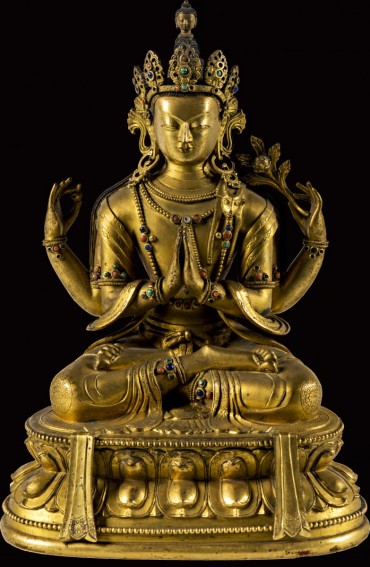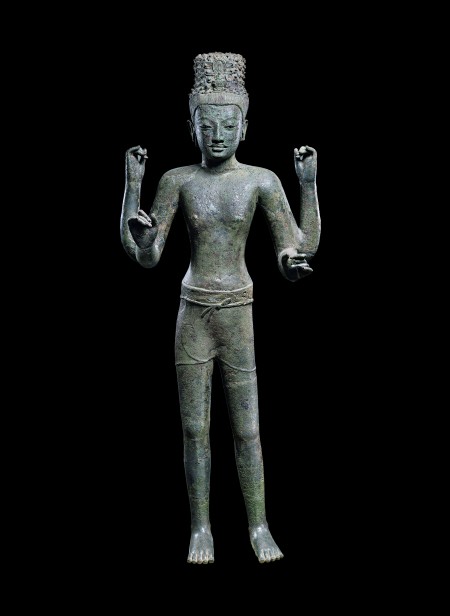China or Tibet, 18th–19th century; gilded metal with inlays; 10 1/4 x 7 1/4 in.; Jacques Marchais Museum of Tibetan Art, 85.04.0682.
Bodhisattva Avalokiteshvara
Northeastern Thailand, second quarter of 8th century; copper alloy inlaid with silver and glass or obsidian; 56 x 22 1/2 x 15 1/4 in.; The Metropolitan Museum of Art, Rogers Fund, 1967, 67.234, photo: www.metmuseum.org.
The Mahayana flourished when Buddhism first came to Southeast Asia, as did representations of bodhisattvas. This 8th-century Thai sculpture depicts a four-armed form of Avalokiteshvara, depicted here as an ascetic in simple clothing with a lean body. In this comparison, we see vast differences in the styles of these two distinctive Buddhist cultures. Unlike the Himalayan mode of luxurious adornments and multiple attributes, the Southeast Asian example has very little detail to signal the bodhisattva’s identity. The most recognizable characteristic is the small Buddha Amitabha who sits in the figure’s crown. Avalokiteshvara’s serene countenance and slight smile echo the gentle nature of his compassionate aspirations, and his half-closed eyes suggest a meditative state, even though he is standing. CF





